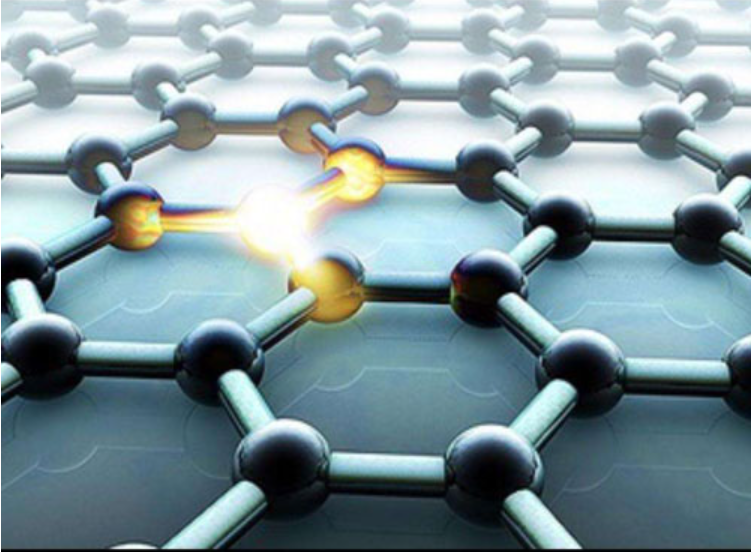Surface-Modified Graphene: Unlocking Versatile Functionalities for Modern Applications
Graphene, known for its remarkable properties such as high electrical conductivity, mechanical strength, and large specific surface area, has transformed material science. However, its pristine form often lacks compatibility with certain environments or target applications. Surface modification of graphene addresses this limitation by introducing functional groups or molecules that tailor its properties to specific needs.

This article explores the methods, advantages, and applications of surface-modified graphene, showcasing how it enhances compatibility and functionality across various industries.
1. What is Surface-Modified Graphene?
Surface-modified graphene involves attaching molecules or functional groups to the graphene surface via physical adsorption or chemical bonding. These modifications provide graphene with new properties, such as hydrophilicity, hydrophobicity, or antimicrobial characteristics, while preserving its intrinsic qualities.
Through surface modification, graphene becomes highly adaptable, opening doors to numerous applications in fields such as healthcare, electronics, and construction.
2. Methods of Surface Modification
Surface modification of graphene can be categorized into physical adsorption and chemical bonding. Each method offers unique advantages and is selected based on the desired functionality.
2.1 Physical Adsorption
This method involves weak interactions such as van der Waals forces or π-π stacking to attach molecules to the graphene surface.
- Examples:
- Adsorbing surfactants to improve graphene’s dispersion in aqueous solutions.
- Coating graphene with antimicrobial agents for medical applications.
Advantages:
- Does not alter graphene’s intrinsic structure.
- Easy and scalable process.
2.2 Chemical Bonding
Chemical bonding introduces covalent attachments between functional groups and graphene.
- Mechanism: Reactive groups on graphene (e.g., hydroxyl or carboxyl groups) form bonds with target molecules.
- Examples:
- Functionalizing graphene with silanes to enhance hydrophobicity.
- Grafting polymer chains for improved compatibility with polymer matrices.
Advantages:
- Strong, stable bonds for durable performance.
- Allows precise control over functional group density.
3. Advantages of Surface-Modified Graphene
3.1 Tunable Properties
Surface modification imparts specific functionalities, such as:
- Antimicrobial Properties: By attaching silver nanoparticles or other agents.
- Hydrophilicity or Hydrophobicity: Adjusted for water affinity or repellency.
3.2 Enhanced Compatibility
Functionalization improves graphene’s dispersibility and compatibility with other materials, such as polymers, metals, or solvents.
3.3 Versatility in Applications
Modified graphene can be tailored for applications ranging from self-cleaning surfaces to advanced sensors, expanding its usability across industries.
4. Applications of Surface-Modified Graphene
4.1 Antimicrobial Coatings
Surface-modified graphene is widely used in antimicrobial applications, making it a valuable material for:
- Medical Devices: Coatings for catheters, surgical instruments, and implants to reduce infections.
- Textiles: Antibacterial clothing, masks, and hospital linens.
- Packaging: Antimicrobial layers for food packaging to extend shelf life.
Case Study:
A hospital introduced surgical instruments coated with silver-functionalized graphene, achieving a significant reduction in post-operative infections.
4.2 Self-Cleaning Materials
Functionalized graphene imparts self-cleaning properties to materials, ideal for:
- Architectural Applications: Coatings for windows, solar panels, and building exteriors to repel dirt and water.
- Consumer Products: Anti-smudge coatings for smartphone screens and eyewear.
Case Study:
A building materials company developed self-cleaning glass using fluorinated graphene, significantly reducing maintenance costs for skyscrapers.
4.3 Electronics
Surface-modified graphene plays a pivotal role in advanced electronic devices.
- Sensors: Functional groups enhance sensitivity and selectivity for gas, chemical, or biosensors.
- Transistors: Modified graphene improves carrier mobility and stability in electronic circuits.
Case Study:
A research team developed graphene-based gas sensors functionalized with amino groups, enabling the detection of trace amounts of ammonia with high accuracy.
4.4 Environmental Applications
Functionalized graphene is a powerful tool for environmental protection and sustainability.
- Water Purification: Modified graphene removes heavy metals and organic pollutants from wastewater.
- Air Filtration: Surface modification enhances graphene’s ability to capture harmful gases and particulate matter.
Case Study:
A water treatment plant employed carboxyl-functionalized graphene membranes, achieving a 90% reduction in lead contamination.
4.5 Energy Storage and Conversion
Modified graphene improves performance in batteries and fuel cells.
- Supercapacitors: Enhanced charge storage and stability through surface modification.
- Fuel Cells: Functional groups improve catalytic activity for hydrogen generation.
Case Study:
A battery manufacturer utilized nitrogen-doped graphene for lithium-ion battery electrodes, resulting in higher capacity and longer cycle life.
5. Challenges and Future Directions
5.1 Challenges
- Cost: Surface modification processes can be expensive, limiting large-scale adoption.
- Scalability: Ensuring uniform functionalization on a large scale is technically challenging.
- Environmental Impact: Some chemical modification methods involve toxic reagents or by-products.
5.2 Future Directions
- Green Functionalization: Developing eco-friendly methods for surface modification, such as using bio-based agents.
- Advanced Functionalities: Exploring modifications for emerging applications, including quantum computing and biomedicine.
- Scalable Techniques: Innovating production methods like roll-to-roll processes to enable cost-effective mass production.
6. Conclusion
Surface-modified graphene represents a revolutionary material with unmatched versatility and potential. By tailoring graphene’s properties through physical or chemical methods, researchers and industries can unlock new functionalities, enhancing compatibility and performance across applications.
From antimicrobial coatings to self-cleaning materials and high-performance electronics, surface-modified graphene continues to redefine possibilities in material science. As research advances, scalable and eco-friendly approaches will further expand its impact, paving the way for sustainable innovation in diverse industries.
This detailed overview of surface-modified graphene demonstrates its transformative potential and real-world applications, engaging readers while ensuring optimal keyword placement for search engine visibility.

